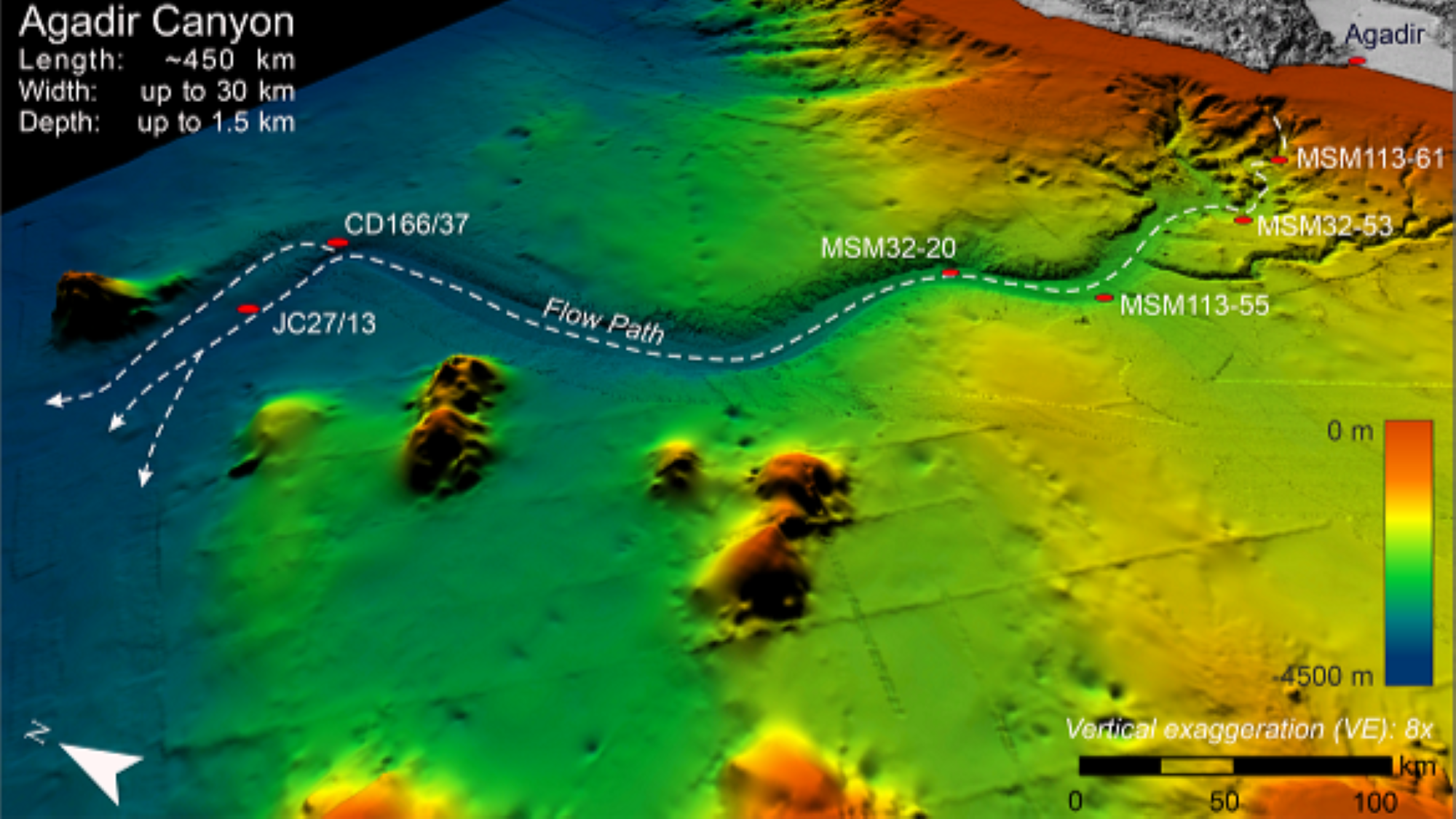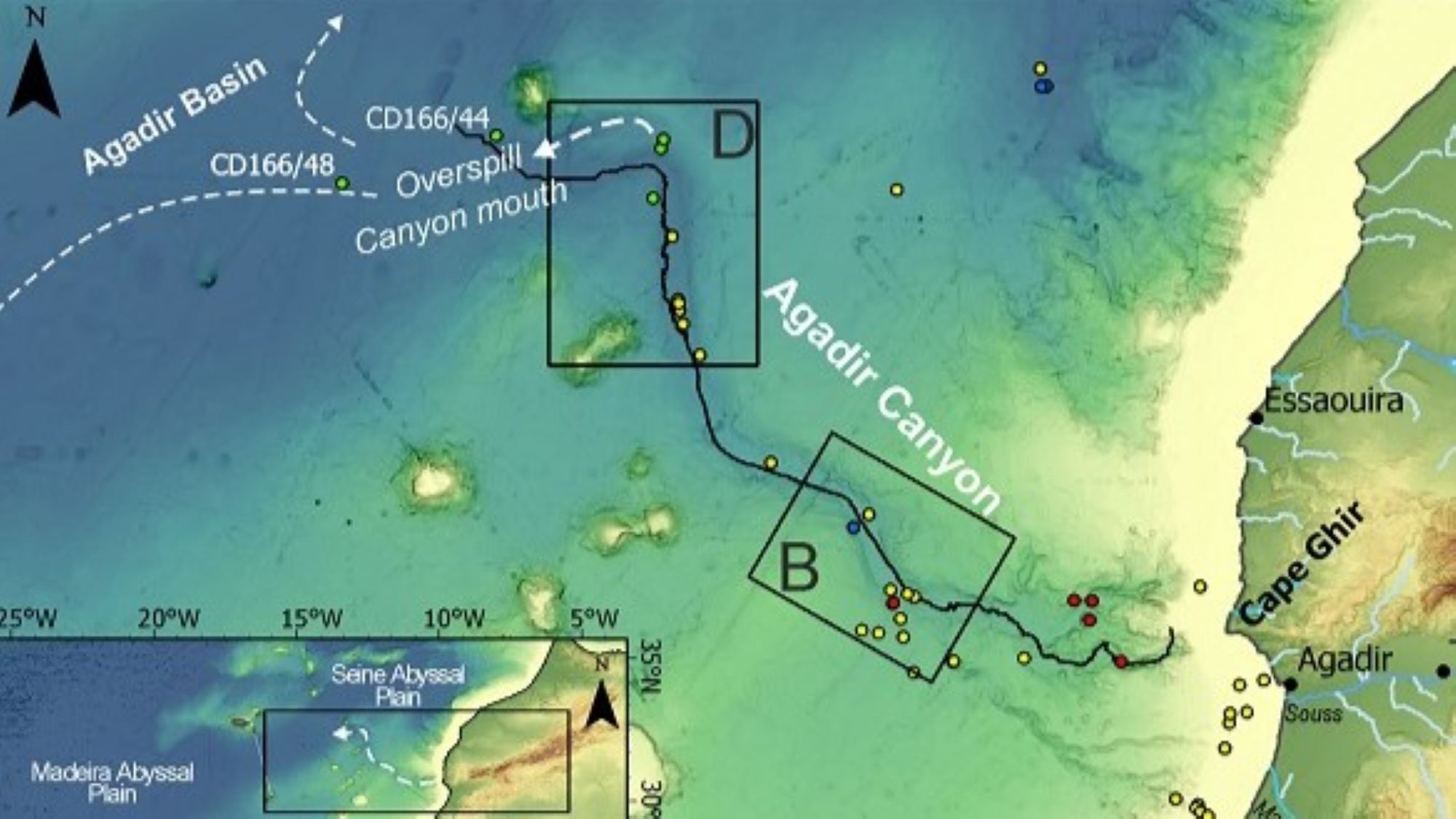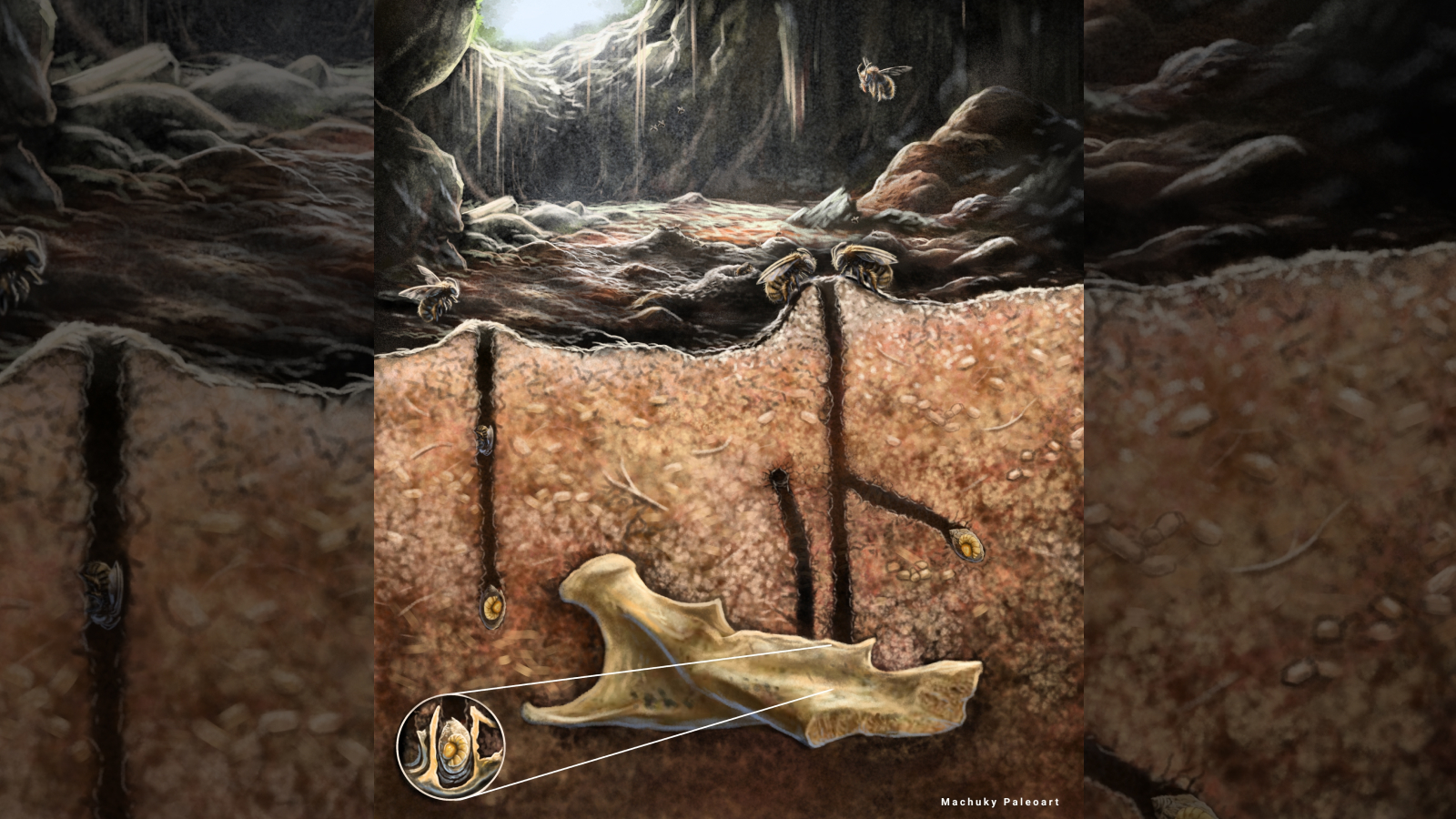Giant underwater avalanche decimated Atlantic seafloor 60,000 years ago, 1st-of-its-kind map reveals
Researchers have mapped the path of a giant submarine avalanche that tore through the Agadir Canyon — a deep trench in the Atlantic seafloor off the coast of Morocco — 60,000 years ago.

An underwater avalanche decimated a huge chunk of the East Atlantic seabed nearly 60,000 years ago, leaving behind an enormous trail of destruction.
The avalanche started as a small seafloor slide in the Agadir Canyon off the coast of Morocco, but it rapidly snowballed into a thunderous torrent of sediment and boulders, according to a new study.
A wave of mud, rocks and sand measuring 660 feet (200 meters) tall came crashing down through the canyon at speeds of 40 mph (65 km/h), "ripping out the seafloor and tearing everything out in its way," study co-lead author Christopher Stevenson, a sedimentologist and lecturer at the University of Liverpool in the U.K., said in a statement. The avalanche tore through the 250-mile-long (400 kilometers) canyon before shooting out the other end and traveling another 1,000 miles (1,600 km) along the Atlantic seabed, Stevenson said.
All in all, the avalanche grew more than 100 times in size along its path, according to the study. That's a huge growth factor compared with snow avalanches and debris flows on land, which grow four to eight times in size from start to end, co-lead author Christoph Böttner, a Marie-Curie researcher in geophysics and geology at Aarhus University in Denmark, said in the statement.
Massive inflation of this kind could be a defining characteristic of underwater avalanches, Böttner said. "We have also seen this extreme growth in smaller submarine avalanches measured elsewhere, so we think this might be a specific behavior associated with underwater avalanches," he said.
The researchers used sediment data to retrace the path of the Agadir Canyon avalanche. They analyzed more than 300 core samples taken during research cruises over the past 40 years, as well as seismic and bathymetric (seabed topography) data from the area. By compiling this information, they created a map of the avalanche that shows its winding path inside and beyond the canyon. The team published its results Aug. 21 in the journal Science Advances.
Get the world’s most fascinating discoveries delivered straight to your inbox.

"This is the first time anyone has managed to map out an entire individual underwater avalanche of this size," Stevenson said. The map revealed that after the avalanche exited the canyon, it spread its load across an area roughly the size of Oregon, covering the seafloor in more than 3 feet (1 m) of sediment.
Underwater avalanches are extremely difficult to measure and often go unnoticed, but a modern-day equivalent to the Agadir Canyon catastrophe could potentially cause serious damage, the researchers said in the statement.
"These findings are of enormous importance for how we try and assess their potential geohazard risk to seafloor infrastructure," study co-author Sebastian Krastel, a professor of marine geophysics and hydroacoustics at Kiel University in Germany, said in the statement. Things like internet cables, which carry the majority of global internet traffic, could suffer huge damage should another avalanche of this size strike again, Krastel said.

Sascha is a U.K.-based staff writer at Live Science. She holds a bachelor’s degree in biology from the University of Southampton in England and a master’s degree in science communication from Imperial College London. Her work has appeared in The Guardian and the health website Zoe. Besides writing, she enjoys playing tennis, bread-making and browsing second-hand shops for hidden gems.


